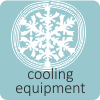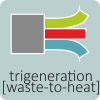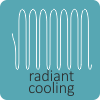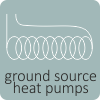Heating systems are required to ensure comfort winter, especially in colder climates. An NZEB must be designed to harness the power of sun through correct orientation, glass area, and insulation so as to reduce the need for heating. In residential application portable electric space heaters are common in India, although they are inefficient and should only be used, where no other options are possible. Small heat-pumps are getting popular in new residential buildings, these are often 3-4 times more efficient than electric space heaters.
In commercial buildings, steam or hot water boilers are used most commonly to generate heating. These boilers use electricity, natural gas, or fuel oil as the energy source. Larger heat-pump systems are also available and can be used for efficient heating.
Heat recovery is highly recommended anytime a heating system is used, often the residual heat from the exhaust can be used for preheating or other low-grade heating application, enhancing the overall heating system efficiency.
Hot Water Boilers
Condensing type hot water boilers, typically fired by natural gas or fuel oil, are recommended for their higher efficiency (over 95% combustion efficiency compared to 70-80% for conventional boilers) and ability to operate well at part load conditions. Condensing boilers can modulating burners and are capable to heat extraction, which would otherwise be wasted by exhaust. The heating output is controlled by regulating the output of the burner to match the load in order extract the best performance.
Source: “Viessmann Vertomat Condensing Boiler” by Dunnd74
A Typical Condensing Boiler
Boiler efficiency is important, but other components, like pumps, pipe insulation, heat exchangers, radiators, etc need to be selected carefully and integrated for overall efficiency of the water heating system. For a net zero energy buildings, selected equipment should meet or exceed the efficiency requirements of ECBC.





















